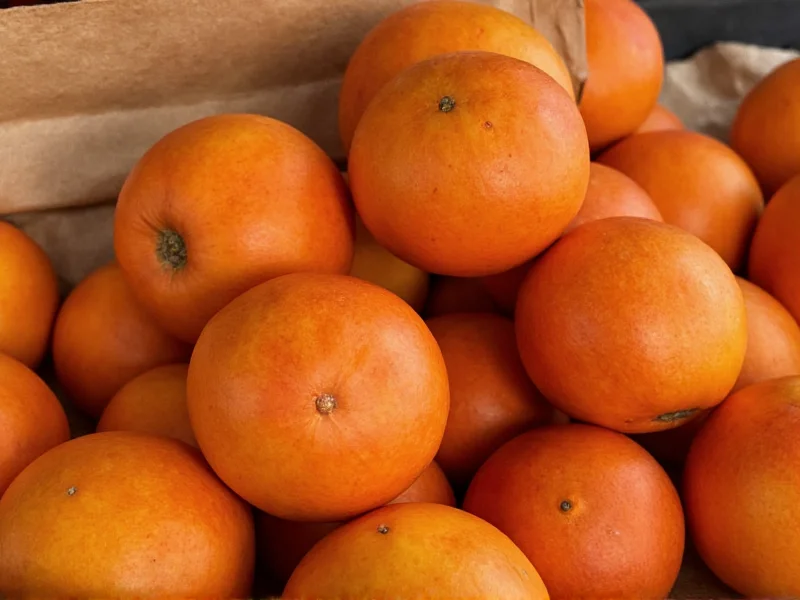Decoding the Spicefruit Misconception
Many home cooks and food enthusiasts encounter the term ‘spicefruit’ and assume it designates a specific fruit variety. This confusion typically stems from two sources: the allspice berry’s dual identity as both fruit and spice, and occasional mislabeling of tropical fruits in specialty markets. Understanding this distinction provides clarity for culinary applications and botanical accuracy.
Allspice: The True ‘Spicefruit’
Pimenta dioica, commonly called allspice, produces small berries that serve as one of the world’s most versatile single-ingredient spices. Harvested while still green and unripe, these berries undergo sun-drying which triggers enzymatic reactions creating their signature complex flavor profile. Despite its name suggesting a spice blend, allspice delivers a singular flavor that remarkably mimics multiple spices.
Native to Jamaica, Central America, and southern Mexico, allspice trees thrive in tropical climates. The berries contain eugenol, the same compound found in cloves, which explains their warm, spicy character. Professional chefs value allspice for its ability to enhance both sweet and savory dishes without overwhelming other ingredients.
Distinguishing Spicefruit from Similar Terms
Several fruits often get mislabeled as ‘spicefruit’ due to flavor characteristics or marketing terminology:
| Common Name | Botanical Name | Relationship to ‘Spicefruit’ | Primary Use |
|---|---|---|---|
| Allspice berries | Pimenta dioica | Correct reference for ‘spicefruit’ | Culinary spice |
| Starfruit | Averrhoa carambola | Common misidentification | Fresh fruit consumption |
| Long pepper | Piper longum | Lesser-known spice fruit | Culinary spice |
| Sichuan pepper | Zanthoxylum spp. | Technically a fruit, not a pepper | Culinary spice |
Botanical Classification of Spice-Producing Fruits
Understanding the botanical distinction between fruits and spices resolves much confusion. In botanical terms, a fruit develops from the ovary of a flowering plant and typically contains seeds. Many culinary spices originate from various plant parts:
- Allspice - Fruit (berry)
- Nutmeg - Seed
- Mace - Aril surrounding nutmeg seed
- Cinnamon - Bark
- Black pepper - Fruit (drupe)
This explains why allspice qualifies as a genuine ‘spicefruit’ – it’s a fruit used directly as a spice, unlike many other spices derived from different plant parts.
Culinary Applications of Allspice Berries
Chefs worldwide utilize whole allspice berries and ground allspice for diverse applications. The whole berries work exceptionally well in:
- Pickling solutions for vegetables and fruits
- Stocks and broths where gradual flavor release is desired
- Infused vinegars and oils
- Traditional Jamaican jerk seasoning blends
Ground allspice shines in baked goods, spice rubs, and meat preparations. Its warming profile complements both sweet applications like pumpkin pie and savory dishes such as Caribbean stews. When substituting for individual spices, use approximately one-third the amount of ground allspice compared to single spices like cinnamon or cloves.
Nutritional Profile and Storage Recommendations
Allspice berries contain notable amounts of manganese, vitamin K, and dietary fiber. They also feature antioxidant compounds including eugenol and quercetin. For optimal flavor retention:
- Store whole berries in airtight containers away from light and heat
- Grind berries immediately before use for maximum flavor impact
- Whole berries maintain potency for 2-3 years; ground allspice for 6-12 months
- Freezing extends shelf life but may cause condensation issues upon thawing
Common Misconceptions About Spicefruit
Several persistent myths surround the term ‘spicefruit’:
- Myth: Spicefruit is a hybrid fruit created through cross-breeding
- Reality: No such hybrid exists; the term refers to allspice berries
- Myth: Spicefruit and starfruit are the same
- Reality: Starfruit (carambola) belongs to a completely different plant family
- Myth: Allspice contains multiple spices blended together
- Reality: It’s a single spice from one plant species with complex flavor notes
Global Culinary Traditions Featuring Allspice
Allspice plays distinctive roles across world cuisines:
- Jamaican cuisine: Essential in jerk seasoning and pickled vegetables
- Middle Eastern cooking: Features in baharat spice blends and meat dishes
- German baking: Key component in lebkuchen and other holiday treats
- Mexican mole: Contributes depth to complex sauce preparations
- North American baking: Common in pumpkin pie spice blends
Understanding these cultural applications helps home cooks authentically incorporate allspice into appropriate dishes rather than using it as a generic substitute.











 浙公网安备
33010002000092号
浙公网安备
33010002000092号 浙B2-20120091-4
浙B2-20120091-4